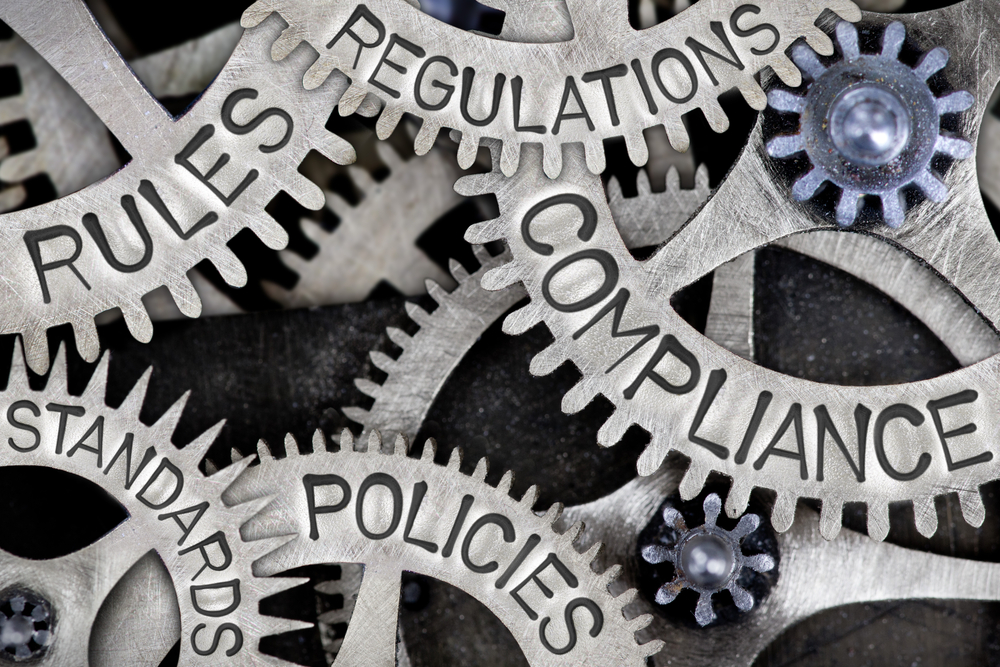Crypto Regulation: The Evolving Legal Landscape in 2024

As we trek deeper into 2024, the cryptocurrency landscape is swirling with anticipation and uncertainty, especially with the bitcoin halving event on the horizon. Regulations seem to be in a dizzying race to catch up with the breakneck speed at which the crypto world is evolving. It makes you wonder, doesn’t it? How are these changes going to affect us—the investors, the enthusiasts, the day-to-day users? With all eyes on the shifting legal frameworks, it’s crucial we stay informed. Let’s navigate these changing tides together, exploring the effects of new tax laws, the resurgence of NFTs, and the fascinating emergence of Web3 ordinals and tokenization of Real World Assets. By staying ahead of the curve, we can turn challenges into opportunities and uncertainty into clarity. So, ready to see what the future holds?
The Crypto Landscape in 2024

The buzz is all about the expected bitcoin halving event and everywhere you look, miners and crypto enthusiasts are in a state of eager anticipation. But what does this mean for the average Joe or the seasoned investor? Bitcoin halving events have historically marked significant milestones, influencing not just the mining community but the entire crypto market’s dynamics.
Tax Laws and Cryptocurrency
Let’s talk about something that touches the nerve of every crypto holder – tax laws. Navigating through the maze of short-term and long-term capital gains can indeed be tricky. Here’s a rundown on what’s happening:
- Short-term capital gains continue to be taxed as ordinary income, varying between 10% and 37%.
- Long-term capital gains, on the other hand, offer a slightly softer blow, with rates ranging from 0% to 20% depending on your overall taxable income.
The key takeaway? The more informed you are, the better prepared you’ll be to manage your digital assets effectively.
NFTs, Web3 ordinals, and Real World Assets
In a surprising twist, NFTs are making a sneaky comeback, brushing off the skeptics and naysayers. But wait, there’s more. The emerging narrative around Web3 ordinals and the swift tokenization of Real World Assets (RWAs) is painting a complex and intriguing picture of the crypto ecosystem in 2024. Are these the new frontiers for investors and enthusiasts alike? The answer, it seems, might reveal itself sooner than we think.
As we wrap up this glimpse into the crypto landscape of 2024, one can’t help but wonder, what’s next? How will regulatory bodies react to the evolving dynamics of the crypto world? Will the anticipated changes stimulate growth or put brakes on innovation? As curiosity piques, stay tuned for the unraveling of regulatory frameworks in the next installment. Could it be the turning point we’ve all been waiting for?
The Progress of Regulatory Framework

It’s an absolute thrill to see how the world is gradually adjusting its lens to view the rapidly advancing field of cryptocurrency. Every step forward in regulatory frameworks isn’t just about placing checks and bounds; it’s about nurturing a space that’s safe, reliable, and bursting with innovation. Let’s take a closer look at this unfolding journey.
Coinbase and Digital Assets
One of the flag bearers in the realm of digital assets, Coinbase, has been at the forefront of navigating the complex seas of crypto regulations. The platform’s dedication to user security is not just commendable but essential for its survival and the trust of its vast user base. What makes Coinbase an interesting case study?
- User Assets Handling: With a robust system designed to protect user assets against unauthorized access and cyber threats, Coinbase is setting a standard for security in the digital age.
- Regulatory Compliance: Their proactive approach in complying with global financial laws demonstrates a commitment to legitimacy and transparency.
But the evolution of regulatory frameworks isn’t confined to how platforms manage assets internally. It’s about how these frameworks adapt to protect consumers and empower innovation at the same time. The burning question is, can regulators keep up without stifling growth?
“The art of regulation is to paint with broad strokes and fine details at the same time.” – Anonymous
As we navigate these changes, it’s crucial to stay informed and proactive. The conversation around crypto regulation is complex, filled with potential pitfalls but also abundant opportunities for those who dare to innovate while respecting the emerging boundaries.
We’re witnessing a shift in perspective from regulators worldwide – from skepticism to cautious optimism and collaboration. This changing attitude is paving the way for more nuanced discussions and, eventually, actionable policies that benefit all stakeholders in the crypto ecosystem.
So, what comes next? As we delve deeper into this evolving narrative, one can’t help but wonder how the United States is shaping up to be a leader or a learner in the grand scheme of crypto regulation. What strategies are being adopted, and what lessons have been learned from the past turbulent years?
Stay tuned, for the answers to these pressing questions might just lay the foundation for the future of cryptocurrency. Could the U.S be the blueprint we’re all waiting for? Let’s explore this in the next segment.
U.S Crypto Regulation Overview

As we sail through the vast ocean of cryptocurrency, navigating the regulatory currents in the U.S has proven to be both a challenge and an opportunity for innovation. 2024 has been a particularly intriguing year, with cryptocurrency regulation evolving at a pace not previously witnessed. But what does this all mean for investors, developers, and everyday users? Let’s unpack the complexities together.
Lessons from the Earlier Years
Reflecting on the rollercoaster ride of the past few years offers us valuable insights into the trajectory of U.S crypto regulation. We’ve seen everything from stringent crackdowns to seemingly laissez-faire approaches. This journey has been punctuated with pivotal moments that have shaped the regulatory landscape we’re navigating today.
- The shift towards recognition: Cryptocurrencies have moved from being viewed as a niche, speculative asset to a recognized financial tool, prompting regulators to take a closer and more structured approach.
- Increased dialogue between stakeholders: One of the most significant advances has been the increasing dialogue between regulators, crypto businesses, and users. This has paved the way for more informed and balanced regulations.
- Focus on user protection: Past mishaps and scams have led to a stronger emphasis on user protection. Regulators are now more vigilant about ensuring that crypto businesses implement robust security measures and transparent practices.
As Warren Buffet once said, “Only when the tide goes out do you discover who’s been swimming naked.” The past years of regulation have indeed exposed the vulnerabilities in the crypto space, but they’ve also highlighted the resilience and adaptability of the community.
But where do we stand now, and what does the foreseeable future hold?
The current landscape is a result of these lessons, sculpted by both triumphs and setbacks. Looking into the specifics, we see regulatory bodies like the SEC and CFTC becoming more adept at navigating the crypto sphere. There’s a noticeable pivot towards creating frameworks that not only seek to protect investors but also foster innovation and growth within the sector. Token classifications, anti-money laundering (AML) standards, and the treatment of digital assets in case of insolvency are just a few areas that have seen considerable progress.
The times when the regulatory environment felt like navigating through a dense fog are slowly clearing up. However, the journey is far from over. The conversation around cryptocurrency and how it fits into the broader financial system continues to evolve. So, what’s next on this horizon?
As we edge closer to unlocking the next chapter, one can’t help but wonder: How will international regulatory trends influence the U.S? Or better yet, in what ways will the U.S set a precedent for others to follow? Stay tuned, as we explore the global stage in our next segment, where we delve into the international response to cryptocurrency regulation — a realm where diversity of thought and approach offers a glimpse into the future of our digital financial landscape.
International Response

As the sun sets in one corner of the world, it rises in another, illuminating different landscapes of crypto regulation. Each country unfolds its unique perspective on the burgeoning field of cryptocurrencies, threading through a complex fabric of policies and attitudes. From the permissive havens that court digital currencies to the restrictive territories casting a wary eye, the global tapestry is as diverse as it is fascinating.
IMF on Global Crypto Assets
The International Monetary Fund (IMF) serves as a pivotal voice in the monetary chorus, attempting to harmonize global economic policies. Their stance on crypto assets provides invaluable insight into the future of digital currencies. The IMF’s reflections and projections are a beacon for many, guiding through unsettled waters with their assessments and advice. Let’s decrypt the IMF’s perspective on this global phenomenon.
The IMF acknowledges that cryptocurrencies are more than a passing trend. They highlight the innovative potential to transform financial services by offering faster, cheaper, and more inclusive alternatives. However, they also caution against the risks such as volatility, consumer protection issues, and potential channels for illicit activities. This duality paints the picture of a digital asset landscape brimming with possibilities yet fraught with hurdles.
A notable quote from the IMF encapsulates the sentiment: “To harness the promise of crypto assets while safeguarding against risks, global cooperation is imperative.” This call for unity strikes a chord, highlighting the importance of collaboration in shaping a balanced approach to regulation.
Across the globe, here are a few standout responses to crypto regulation:
- In Japan, the land famously open to innovation, cryptocurrencies are legally recognized, promoting a thriving crypto economy while ensuring robust security measures.
- Switzerland, with its Crypto Valley in Zug, highlights a pioneering attitude toward blockchain and crypto, backed by supportive regulatory frameworks.
- Conversely, countries like India tread cautiously, with fluctuating policies reflective of a complex relationship with cryptocurrency.
The diversity in global crypto regulations underscores the complexity of crafting policies that protect users while fostering innovation. As we scan the world, it becomes apparent that consensus is the puzzle piece yet to fully fit. The IMF’s call for global cooperation isn’t just practical; it’s essential.
But as we navigate through these international waters, a question lingers – how do we balance the scales between regulation and innovation? The answer might just lie in the journey ahead.
Stay tuned, as we explore the equilibrium that sustains growth while ensuring stability, leading towards a future where digital assets flourish under watchful eyes that respect the spirit of innovation.
Balancing Act: Regulation and Innovation

It’s an age-old debate in the tech world, especially poignant within the bounds of cryptocurrency: how do we tread the delicate line between necessary regulation and fostering innovation? The balance isn’t just crucial; it’s a linchpin in the continued evolution and adoption of crypto technologies.
Imagine walking a tightrope where on one side you have the unbridled potential of blockchain technology, and on the other, the absolute necessity to protect consumers and ensure fair play in markets. This tightrope isn’t just walked by creators and consumers but regulators worldwide.
- Real-World Examples: We’ve seen countries like Singapore championing a progressive stance towards crypto, fostering growth while keeping a keen eye on market integrity. Then there’s the European Union’s Markets in Crypto-Assets (MiCA) framework, aiming to provide comprehensive rules for crypto asset service providers, ensuring investor protection without stifling innovation.
- Studies Show: A recent study by the Cambridge Centre for Alternative Finance suggests that regulatory clarity can actually boost innovation. By knowing the rules of the game, developers can create solutions with confidence, and investors can participate without fear of a regulatory backlash.
But it’s not all smooth sailing. The challenge remains in understanding the profoundly technical aspects of crypto technologies and their potential use cases. It’s akin to trying to regulate the internet in the 90s – a daunting task, fraught with uncertainties but ripe with potential.
“Innovation is the calling card of the future, and regulation is how we ensure it serves everyone.” – a sentiment that captures the essence of our journey in the crypto space.
So, how do we ensure that regulations nurture the growth of the crypto world rather than hindering it? Through dialogue, research, and a commitment to understanding. The conversation between regulators, innovators, and the community needs to be ongoing, transparent, and constructive.
As we move forward, remember, the goal isn’t to handicap innovation but to nurture it in a way that ensures longevity, security, and fairness. This balance is not only possible; it’s essential for the future of cryptocurrency.
What will this look like in practice? Are there new models of regulation on the horizon that could revolutionize this balancing act? Stay with me as we explore these questions and more, looking towards a future where regulation and innovation stride hand in hand.
Resource Analysis

When it comes to understanding the whirlwind of cryptocurrency regulations in 2024, tapping into reliable resources is pivotal. So, let’s cut through the noise together, employing some of the most insightful sources available to dive into this complex topic. We’ll be referencing giants like Nasdaq, LinkedIn, and the IMF for a robust, comprehensive exploration of the evolving crypto regulatory landscape.
First off, Nasdaq offers us an eagle-eye view of what crypto regulation and compliance look like in the current climate. Through their lens, we see the tightrope walk that lawmakers and regulatory bodies are performing to ensure that digital assets can thrive without opening floodgates to potential risks and malpractices.
On the human side of things, LinkedIn provides us with perspectives from professionals deeply entrenched in the crypto world. Through articles and discussions, we get a personal look at how regulation impacts businesses and individuals, building a multidimensional understanding of the space.
For a global perspective, we turn to the International Monetary Fund (IMF). Their analysis sheds light on the international efforts to tame the wild beast that is global cryptocurrency and highlights the challenges and opportunities that lie ahead in harmonizing regulatory frameworks across borders.
These resources, with their real samples, backed by rigorous studies, give us a practical lens through which we can understand the complexities of crypto regulations. As we navigate this terrain, we aim to distill the essence of these analyses, presenting you with the most relevant insights that matter.
But why bother looking into all these heavy-duty sources, you might ask? Well, it’s simple. Getting a grasp on the regulatory scenario is crucial for anyone involved in the crypto space, be it as an investor, a developer, or even a casual observer. Knowing how the wind is blowing regulatory-wise helps us make informed decisions, adapt strategies, and foresee the direction in which the crypto ecosystem is evolving.
Now, as we’ve armed ourselves with top-notch intel from Nasdaq, LinkedIn, and the IMF and uncovered the current state of crypto regulations, we’re left pondering what the horizon might hold. What steps could further shape the crypto regulatory landscape in 2025? Stick around as we venture into speculative territory in our concluding piece, promising insights into the future interplay between innovation, regulation, and the burgeoning world of digital currencies.
Regulatory Outlook for 2025

As we gaze into the crystal ball to predict the trajectory of crypto regulation into 2025, it’s clear we’re standing at a crossroads. The past few years have been nothing short of a rollercoaster, juggling between fostering innovation and ensuring investor protection. But as we inch closer to 2025, the plot seems to thicken. Here’s my take on what we might expect in the realms of clarity, cooperation, and the broader future of crypto regulation.
Clarity Needed
In the complex web of crypto regulation, one word sums up the collective aspiration of the crypto community: Clarity. The call for clearer rules isn’t just about making life easier for crypto entities; it’s about paving the path for mainstream adoption. We’ve seen instances where ambiguity in laws has hindered growth and fostered uncertainty.
So, how might clarity be achieved? By drawing from successful regulations globally. For instance, some countries have implemented specific licensing frameworks for crypto businesses, offering a clear compliance pathway. Adopting such models more broadly could help demystify legal expectations, encouraging innovation within a secure framework.
Looking Forward
Looking towards 2025, the hope for a collaborative approach between innovation and regulation looms large. The dream scenario? A global consensus on key aspects of crypto regulation. This doesn’t mean uniform laws across all borders, which is unrealistic. However, establishing common ground on principles like consumer protection, anti-money laundering (AML), and Know Your Customer (KYC) practices would mark significant progress.
There are already signs of this shift, with international forums and task forces focusing on bridging gaps between countries. Encouragingly, we’re seeing regulators and innovators sitting at the same table, aiming to understand each other’s perspectives better. This cooperative spirit could be the golden ticket to creating a regulatory framework that safeguards without stifling.
Final Thoughts
The interplay between crypto and regulations is undoubtedly one of the most enthralling sagas of our era. As we venture further into the 21st century, this relationship will continue to evolve, molded by technological advancements, market dynamics, and societal needs. The key to navigating this journey? Engagement and dialogue – between governments, businesses, and the crypto community at large.
As we speculate on the future, let’s remain optimistic but vigilant, embracing the opportunities that come with change while advocating for a regulatory landscape that nurtures growth. Here’s to a future where innovation and regulation go hand in hand, steering the crypto world toward a brighter, more secure horizon.
Stay tuned; the story of crypto is far from over, and there’s always more to learn and explore.
